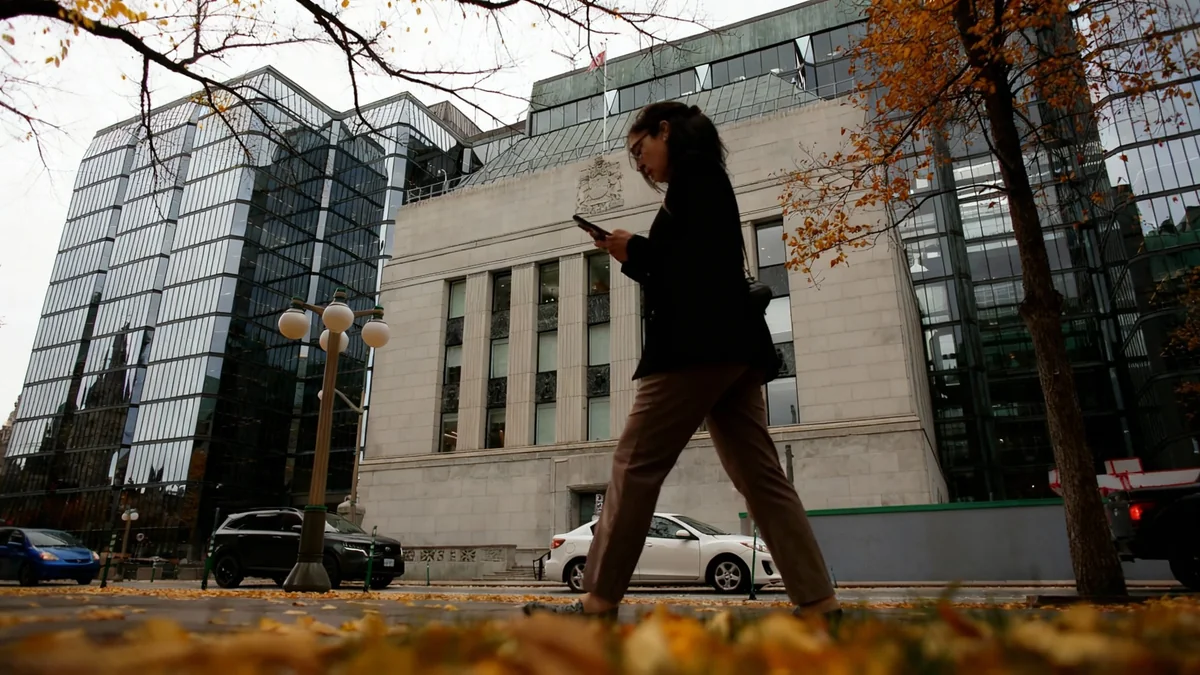A Federal Reserve governor has put forward the idea that the rapid growth of dollar-pegged stablecoins could exert significant downward pressure on U.S. interest rates. In a speech delivered in New York, Fed Governor Stephen Miran argued that this emerging force in digital finance might compel the central bank to lower its policy rate to avoid inadvertently slowing down the economy.
Miran's analysis connects the booming demand for these digital assets to fundamental economic principles, suggesting that the crypto market is no longer a niche concern but a factor with the potential to influence mainstream monetary policy.
Key Takeaways
- Fed Governor Stephen Miran suggests the rise of stablecoins could lower the U.S. neutral interest rate, known as "r-star."
- The growing demand for dollar-denominated assets by stablecoin issuers is identified as the main cause.
- This effect could require the Federal Reserve to cut its benchmark interest rate by as much as 0.4 percentage points.
- Miran warned that not adjusting policy in response could have a contractionary effect on the economy.
The Stablecoin Effect on Monetary Policy
Speaking to an audience of economists, Stephen Miran outlined a direct link between the cryptocurrency market and the Federal Reserve's policy decisions. He described stablecoins as a potential "multitrillion-dollar elephant in the room for central bankers," highlighting the scale of their potential impact.
The core of his argument centers on the concept of the neutral rate of interest, often called "r-star." This is the theoretical interest rate that neither stimulates nor restricts economic growth. According to Miran, the stablecoin market is actively pushing this neutral rate lower.
"Stablecoins are already increasing demand for U.S. Treasury bills and other dollar-denominated liquid assets by purchasers outside the United States, and this demand will continue growing," Miran stated during his address.
This increased demand effectively increases the supply of funds available for lending in the economy. When the supply of loanable funds goes up, the price—the interest rate—naturally tends to fall. This, Miran argues, is structurally lowering the r-star for the U.S. economy.
Why a Lower Neutral Rate Matters
A lower neutral rate has significant implications for the Federal Reserve. The central bank sets its policy rate, the federal funds rate, with the goal of keeping it aligned with the neutral rate to maintain economic stability. If the Fed's policy rate is set higher than the underlying neutral rate, it acts as a brake on the economy, potentially leading to slower growth and higher unemployment.
What Are Stablecoins?
Stablecoins are a type of cryptocurrency designed to maintain a stable value by pegging it to a real-world asset, most commonly the U.S. dollar. To back this peg, issuers typically hold reserves of assets like cash, U.S. Treasury bills, and other short-term debt. As the circulation of stablecoins like Tether (USDT) and USD Coin (USDC) grows, so does the issuer's need to purchase and hold these dollar-denominated assets, creating a new and substantial source of demand.
Miran warned that if the Fed fails to recognize and adapt to this shift, its current policy stance could become unintentionally restrictive. "A failure of the central bank to cut rates in response to a reduction in [r-star] is contractionary," he explained. This means that even holding rates steady could be equivalent to tightening policy if the underlying neutral rate has fallen.
Quantifying the Impact on Interest Rates
Miran did not just speak in theoretical terms; he provided a specific estimate of the potential impact. Citing prior research, he suggested that the growth in stablecoins could eventually push the Fed's benchmark rate down by a notable margin.
Potential Rate Reduction: 0.4%
According to research referenced by Governor Miran, the demand generated by the stablecoin market could justify a reduction of the Federal Reserve's benchmark interest rate by as much as 0.4 percentage points, or 40 basis points.
This is a significant figure in the context of monetary policy, where changes are often made in increments of 0.25 percentage points. Miran emphasized that this effect is likely to grow as the adoption of stablecoins continues to expand globally.
"Even relatively conservative estimates of stablecoin growth imply an increase in the net supply of loanable funds in the economy that pushes down" the neutral rate, he said. This adds a new, technology-driven dimension to the ongoing debate among economists and policymakers about where the neutral rate truly lies.
A New Argument for Lower Rates
Governor Miran, an appointee of former President Donald Trump, has been a consistent advocate for lower interest rates during his tenure on the Fed board. His previous arguments have largely focused on moderating inflation and ensuring that monetary policy does not impede economic expansion.
His latest speech introduces a novel justification for easier policy, rooted in the world of digital finance. By linking stablecoins to the neutral rate, Miran is suggesting that structural changes in the global financial system—driven by cryptocurrency—are fundamentally altering the economic landscape the Fed operates in.
This perspective suggests that the need for lower rates is not just a response to short-term economic data, but a necessary adjustment to a long-term structural shift. If the neutral rate is indeed lower than many of his colleagues assume, Miran's argument implies that "policy rates should also be lower than they would otherwise be to support a healthy economy."
Miran is currently serving an unexpired term on the Federal Reserve board and is expected to depart his position in January. His remarks, therefore, contribute a final and forward-looking perspective to the central bank's ongoing policy discussions, urging his colleagues to consider the profound impact of financial technology on their core mission.





